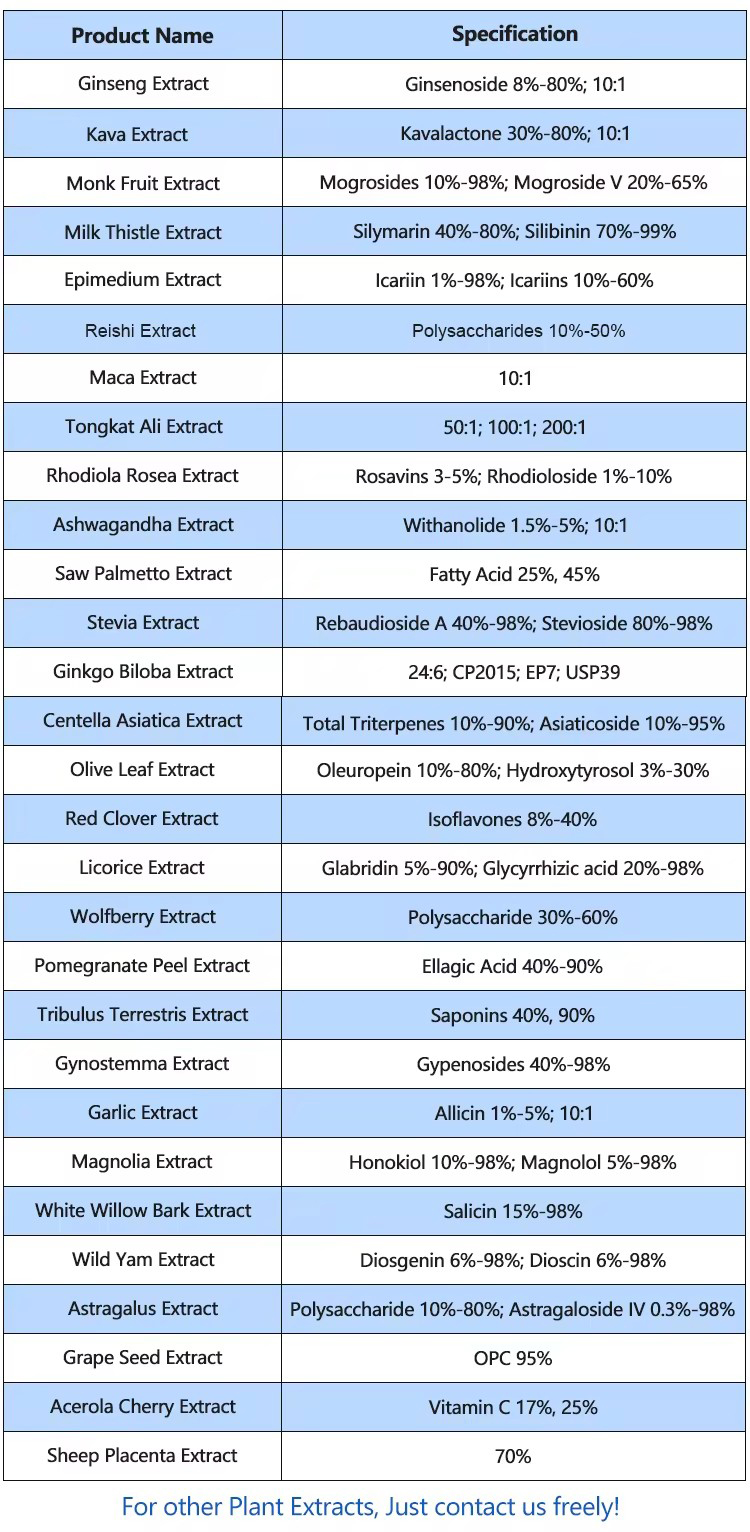Saw palmetto extract is derived from the berries of the saw palmetto plant (Serenoa repens), a small palm native to the southeastern United States. The extract is primarily used in traditional and alternative medicine, especially for treating symptoms of benign prostatic hyperplasia (BPH) in men.
Chemical Structure:
The chemical composition of saw palmetto extract is complex and includes various components such as fatty acids, sterols, and flavonoids. The major bioactive constituents typically include:
- Fatty Acids: Saw palmetto extract contains several fatty acids, with lauric acid, oleic acid, myristic acid, and palmitic acid being prominent.
- Sterols: β-sitosterol is the main sterol found in Saw palmetto extract, which is believed to contribute to its therapeutic effects on prostate health.
- Flavonoids: These are secondary metabolites that contribute to the antioxidant properties of saw palmetto extract.

Physical Properties:
The physical properties of saw palmetto extract can vary depending on the preparation method and the specific composition of the extract. However, generally:
- Appearance: Saw palmetto extract is often a dark greenish-brown to brownish-black oily liquid or semi-solid paste.
- Odor and Taste: It has a characteristic odor and taste, which can be described as slightly aromatic and bitter.
- Solubility: Saw palmetto extract is lipophilic (fat-soluble), which means it dissolves well in oils and fats but not in water.
- Density: The density can vary but is generally higher than water due to its oily nature.
- Stability: When stored properly (protected from light and moisture), Saw palmetto extract can have a good shelf life. However, it may degrade if exposed to prolonged heat or light.

Uses and Applications:
Saw palmetto extract is primarily used as a dietary supplement to support prostate health and alleviate symptoms of BPH, such as urinary difficulties. It is available in various forms including capsules, tablets, liquid extracts, and powders.
In summary, Saw palmetto extract is chemically rich in fatty acids, sterols (especially β-sitosterol), and flavonoids. Its physical properties include a dark oily appearance with characteristic odor and taste, and it is primarily used for its potential health benefits related to prostate function.
